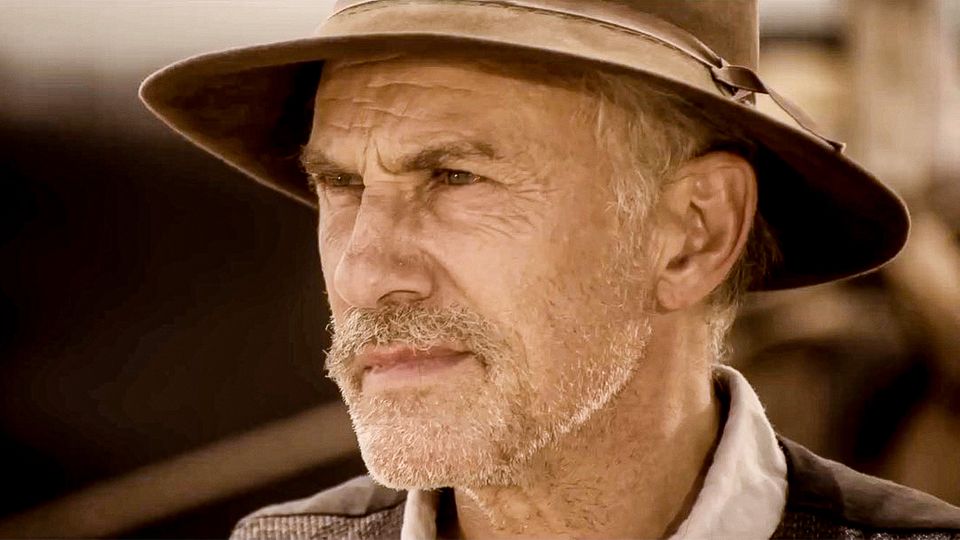
From the genesis of cinema to the present day, the western genre has remained a favourite with audiences worldwide. Its tales are metaphors for a dog-eat-dog world. Our rivalries, conflicts and inner thoughts are brought to life through a time period when people used bloodshed as currency.
The westerns of Classical Hollywood sought to uphold the values of colonialism and tradition, whereas New Hollywood began to revise these tenets and criticise authority. While fans are familiar with the masterworks of John Ford and Sergio Leone, this list will highlight lesser-known titles of excellent quality.
1. Ride in the Whirlwind (Monte Hellman, 1966)
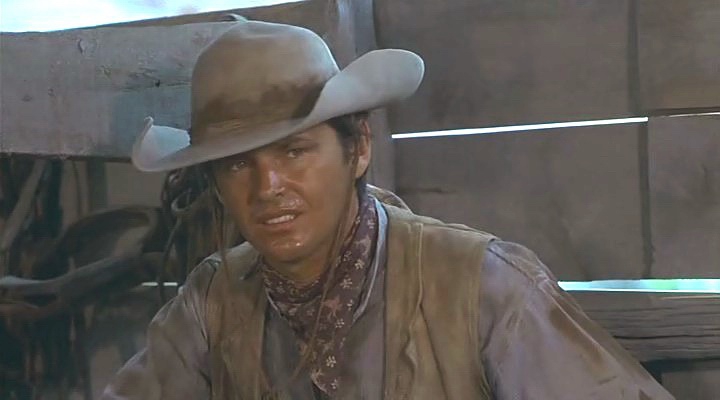
Cowboys Vern (Cameron Mitchell), Wes (Jack Nicholson) and Otis (Tom Filer) are forced to spend the night at the hideout of an outlaw gang led by Blind Dick (Harry Dean Stanton). When a vigilante posse invades, the cowboys are assumed to be part of the gang. A vicious shootout ensues.
Ride in the Whirlwind was shot back-to-back in Utah with Hellman’s other western, The Shooting, which starred many of the same actors, like the mysterious Millie Perkins. The script was written by Jack Nicholson and produced by B movie godfather Roger Corman, who mentored Martin Scorsese and Francis Ford Coppola early in their careers. The film is a bleak, hypnotic, unforgiving acid western offering an existential meditation on discrimination, mortality and mob violence. In contrast to earlier westerns, its nihilism mirrors the Camus and Sartre-infused mood of the mid-‘60s: when society was stripping back the meaning and conventions of tradition, transitioning into the modern age.
Released a year before the first official New Hollywood picture, Bonnie and Clyde (1967), Ride in the Whirlwind sets the tone for the stylistic experimentation and artistic innovation this movement would exhibit in the ‘70s. As with all his performances, the late Harry Dean Stanton’s turn is sublime. Such was his unsurpassable talent, he made more popular stars appear like cringeworthy over-actors when compared to his astonishingly naturalistic, deeply emotional craft. Many actors are fine theatrical performers, but Stanton brought a rawness to his movies which made them feel so real, it was as if they were documentaries about him.
2. Death Rides a Horse (Giulio Petroni, 1967)
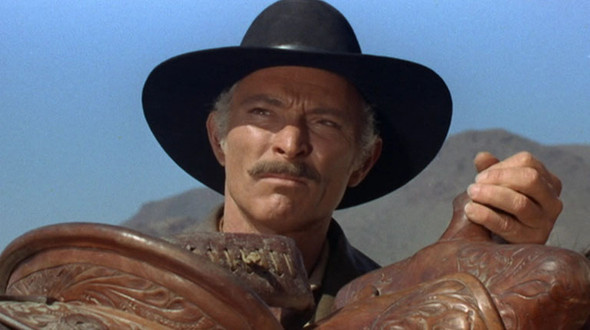
Young gunslinger Bill (John Philip Law) partners up with seasoned criminal Ryan (Lee Van Cleef) in order to take revenge on the bandits who killed his family. Though he was a child when the events occurred, Bill still remembers the bandits’ appearances: their distinctive tattoos, scars and a skull earring. However, during the quest, Ryan’s ulterior motives are gradually unearthed.
Aside from his tenure with Sergio Leone, Death Rides a Horse encompasses one of legendary Lee Van Cleef’s finest roles during his time filming in the Spanish desert. He’s typically quiet, sly, menacing and dryly humorous, reasserting why he’s the most iconic western actor next to John Wayne. What is more, his incredible, distinctive face of hawkish almond eyes adds intrigue, subtext and backstory to his character. Death Rides a Horse’s adventure storyline is the epitome of the revenge and mentorship sub-genres.
Furthermore, it’s strengthened by its bold spaghetti western stylisation, riveting gunfights and brooding suspense. The climax’s duel is as perfect as one can locate in the genre, where mysteries and revelatory twists are shockingly revealed. What makes Death Rides a Horse a significant genre piece is that its action is bolstered by a strong foundation of relatable tragedy, achieving emotional investment. One of the most exemplary westerns in cinema history, it is without doubt a must-watch.
3. The Specialists (Sergio Corbucci, 1969)
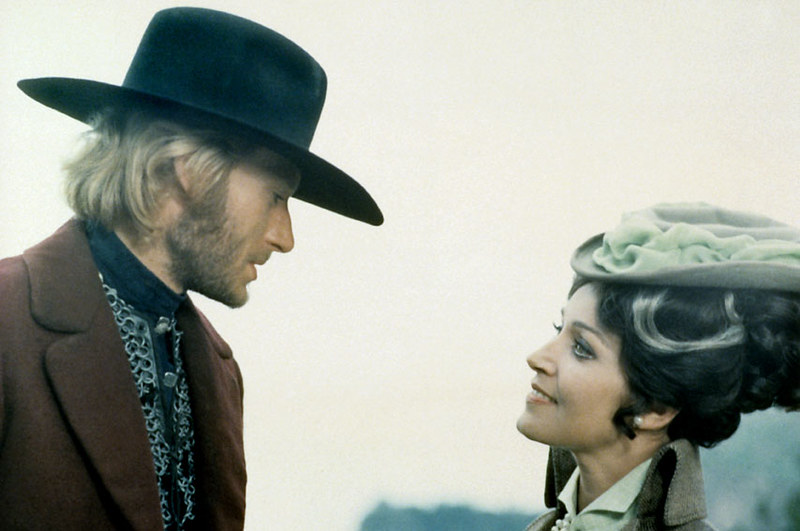
Hud (French rock ‘n’ roll singer Johnny Hallyday) enters the town of Blackstone to avenge the death of his brother Charlie. Charlie was executed after allegedly robbing a bank. Hud endeavours to prove his brother’s innocence, at the same time as battling townsfolk and Mexican bandits.
Sergio Corbucci’s work is one of the foremost influences on Quentin Tarantino. Tarantino dubbed Corbucci “the second best director of spaghetti westerns, after Sergio Leone.” Corbucci came of age in an Italy dominated by the tyrannical fascism of Mussolini. His anti-authoritarian westerns can easily be read as allegorical protests against fascism. He related that The Specialists is “a film about how the wealthy are the oppressors.”
It was shot in the snow-peaked Dolomite mountains and features Corbucci’s trademark excessive, stylised, “comic book” gore. Though The Specialists isn’t as well-known as his more prominent works, such as Django (1966), it is an outstandingly entertaining, thought-provoking western in its own right. It contains a wealth of affecting, memorable imagery, such as a town of naked people crawling through the mud, as well as idiosyncratic costumes, seen in Hud’s bulletproof chainmail waistcoat.
4. Sabata (Gianfranco Parolini, 1969)
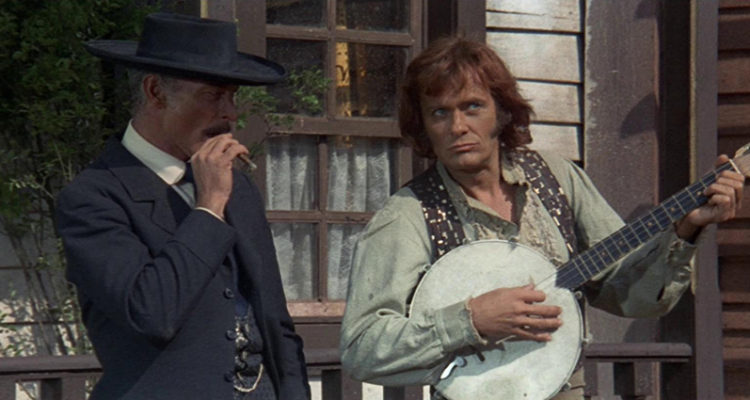
A group of bandits steal $100,000 from a bank in Daugherty, Texas. What they weren’t prepared for, however, was the quick-drawing bounty hunter Sabata (Lee Van Cleef). Sabata’s on a mission to bring the perpetrators to justice and receive a handsome reward. He’s assisted by his new friends: Civil War veteran Carrincha (Ignazio Spalla) and the acrobatic ‘Alley Cat’ (Aldo Canti).
With its irreverent humour, Sabata is as much a comedy as it is a western, supported by the iconic Van Cleef’s threatening silence and cheekiness. In the context of the late-‘60s, Cleef represents a rebel hero standing up to the authority of the establishment, reflecting the burgeoning counterculture. Everything in the movie is absurdly over-the-top, festooned with the ostentation of Italian grand opera.
While this is most noticeable in the sets and overall tone, the trait’s scrutable in the details too, such as a walking cane that’s fashioned into a harpoon and a banjo with a rifle concealed in its neck. Sabata’s ultra-violent, with almost constant shooting throughout its duration and a body count that must push 1000. Ultimately, it’s an insatiably fun film with never a dull moment, boasting a classic genre storyline and regular laughs.
5. Rio Lobo (Howard Hawks, 1970)
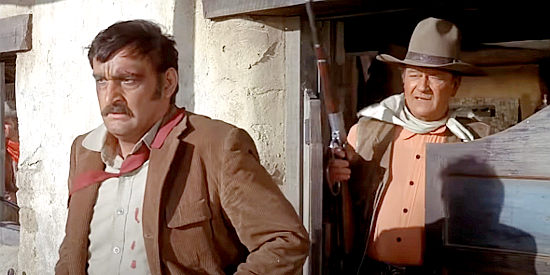
Cord McNally (John Wayne) sets out to track down two men in the town of Rio Lobo, Texas with the help of Shasta Delaney (Jennifer O’Neill) and Captain Pierre Cordona (Jorge Rivero). The men they’re hunting were traitors in McNally’s regiment during the American Civil War. Their actions led to the death of one of McNally’s friends.
Even in his last film, it’s apparent that Howard Hawks was an unrivalled master of the western and action genres. The choreography of the action sequences is expertly, seamlessly executed. This is visible in the opening set piece, where hornets are poured in through the roof of a train caboose. What is more, the cinematography is of great clarity, the shots suitably chosen to advance the story, at the same time as being exceedingly beautiful. The taut dialogue is equally functional, direct and concise, yet concurrently funny and colourful. Rio Lobo is briskly-paced and enrapturing, making it just as enjoyable to a modern audience as it was to 1970s cinema-goers – a testament to Hawks’s talent.
As one can expect, John Wayne is as characterful, authoritative, confident and badass as ever. His performance reasserts why he’s such a mesmerising, magical movie star, in the purest expression of the description. Unusual for a picture of this time, Shasta O’Neill is a thoughtfully crafted female character, written with depth and empathy. This is not to mention the sterling comedy stylings of another western icon: Jack Elam (Once Upon a Time in the West). Although Rio Lobo is often disregarded in Hawks’s filmography, it’s far better written and more interesting than his signature picture: Rio Bravo (1959). It is western movie heaven and denotes the end of the genre’s classical period.